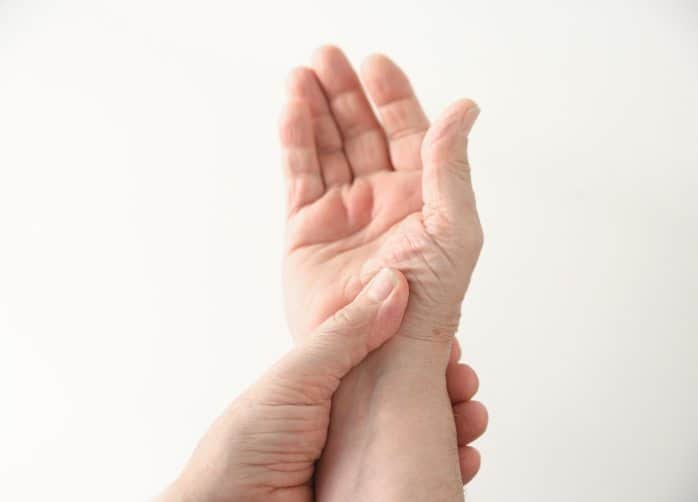
“Text neck” can be a pain in your neck, but it isn’t the only tech-related ache you should be aware of. Carpal tunnel syndrome is an ailment that’s spreading across offices one keyboard at a time.
The carpal tunnel is “a narrow passageway located at the base of the hand.” It protects our tendons and median nerve. When this median nerve is pinched or compressed it can cause carpal tunnel syndrome (CTS). This condition cause pain and numbness in our hands and wrist.
Many factors can lead to CTS. For instance, CTS is most commonly found in individuals between the ages of 30 and 60. It’s also more likely to affect women than men. Illnesses that cause pain and inflammation in our arms and hands like rheumatoid arthritis can lead to carpal tunnel syndrome. And although substantial studies are scarce, it’s suspected that activities with repeated motions can lead to CTS like intense keyboard use, knitting, and writing.
Common symptoms of carpal tunnel syndrome include:
- A weak grip
- Loss of fine finger movement
- Pain in wrist, palm or fingers.
- Tingling or numbness in fingers and palm
If you want to avoid these painful symptoms you’ll need to take proactive steps.
Listed below are five Mindful Work® suggestions to help protect you from carpal tunnel syndrome.
1. Eat your vitamins
Some have found that vitamin B6, which helps maintain normal nerve function, can help with carpal tunnel syndrome. You can include vitamin B6 in your diet by eating breakfast cereals, chickpeas, potatoes, and tuna. However, if you want to take vitamin B6 supplements be sure to talk to your doctor first.
2. Change your routine
Take a few “micro-breaks” throughout the day to relax. You could walk around your office or go outside for fresh air. These breaks will not only relieve tension in your body, they’ll also help you regroup.
3. Stretch and exercise
You can reduce your risk of developing carpal tunnel syndrome by doing a few helpful exercises once every hour. You can stretch and strengthen your wrists, fingers, and forearms with these exercises (they only require a few minutes to complete).
4. Form and posture
To further ease the tension in your body be mindful of your posture. For instance, make sure that your back is straight and that your wrists are straight with your elbows at your side.
5. Mindful gadgets
If you have a desk job consider rethinking your keyboard or mouse pad. There are keyboards designed to promote a more natural hand and wrist position. Or consider mouse pads with built in wrist support.









